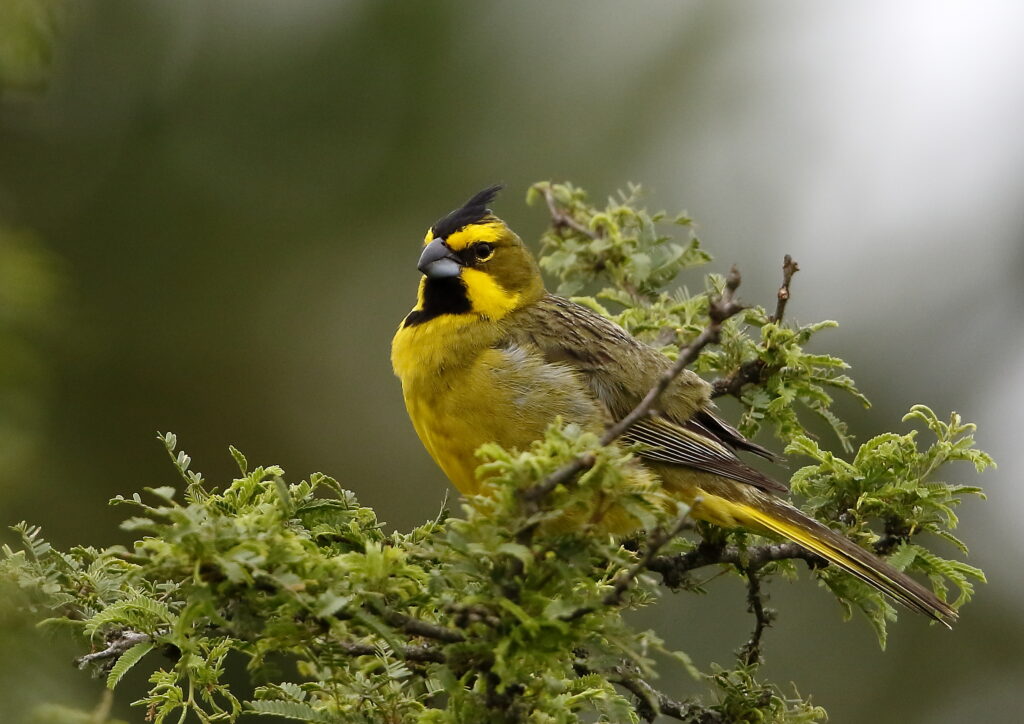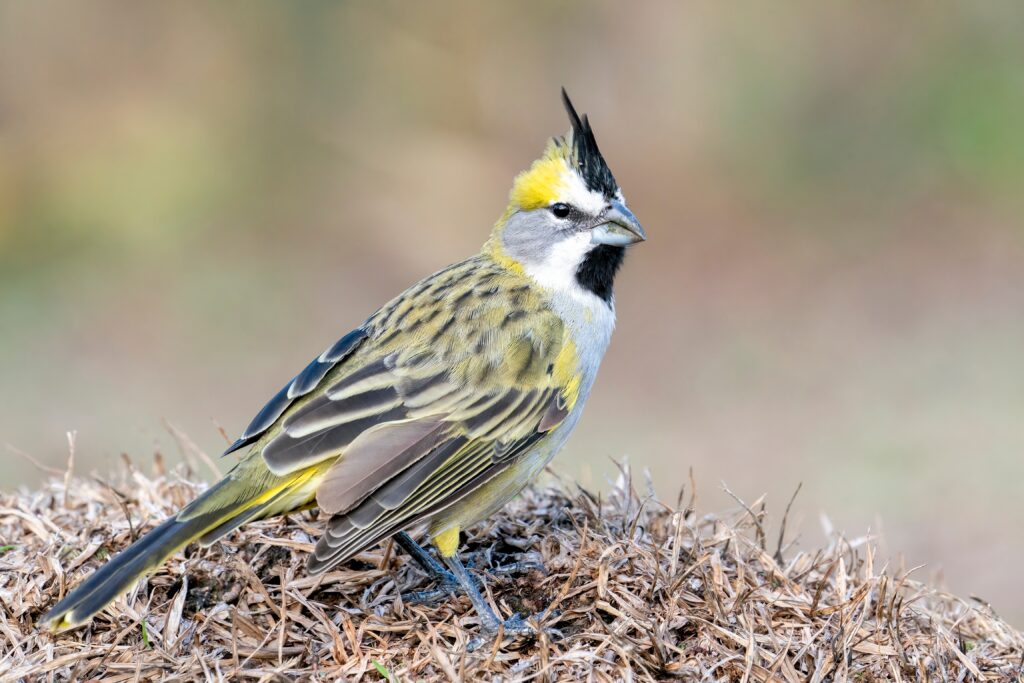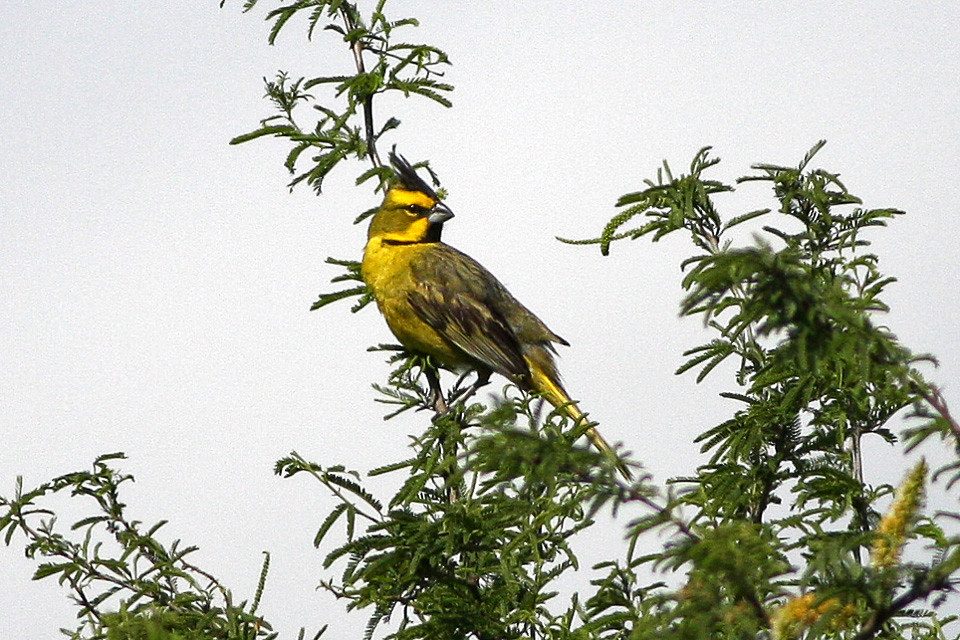GOING FOR A SONG

Resembling a canary on steroids and with a cheerful, chirruping whistle for a song, Yellow Cardinal is an attractive relative of the tanagers. But, as with many such songbirds, being aesthetically appealing to humans has been its downfall.
By David Callahan
Header image: Male Yellow Cardinal © Hector Bottai
With its bright yellow and olive-green body, black cavalier crest and striped black-and-yellow head (plus some white in the female), Yellow Cardinal has proved irresistible to cagebird fanciers, whose depredations have seen this formerly common and widespread species reduced to a total population of no more than 3,000 individuals.
But it’s not only the illegal bird trade that threatens this species. Its home range – in the open Prosopis thorn woodland and savannah of Argentina and Uruguay’s Espinal ecoregion – has also retracted. This is partly due to chronic over-exploitation by the timber industry, which has extracted the native wood for furniture, and partly because cleared areas are subsequently replanted with non-native eucalyptus.
These radical habitat changes have also increased parasitism on the cardinal by both Shiny Cowbirds and botflies. Add local people’s growing demands for firewood and fragmentation of its range, and the current decline of Yellow Cardinal has been unavoidable. It’s perhaps conversely ironic that Prosopis woodland has been highlighted as a major cause of the Lesser Florican’s decline in India, where the tree is an invasive alien.

A 2019 citizen science survey covering most of Yellow Cardinal’s historical range found it present in just four reserves, two of which are privately owned and offer only minimal protection. While a new population was discovered in Argentina’s Sierra de las Quijadas National Park during the survey, a worrying 78 per cent of the total sightings came from outside protected areas, many from suboptimal spiny scrub in drier habitats.
There is hope, though. Conservationist Rocio Lapido explains: “Aves Argentinas [BirdLife Partner] has been working on the Yellow Cardinal Project since 2016. We develop alliances with wildlife rescue centres and enforcement agencies to recover and release illegally traded cardinals [in Argentina and Brazil]. This includes strengthening surveillance and promoting conservation of their habitats through designating protected areas and working with landowners. Also, in Argentina there is specific legislation protecting the species.” A captive-breeding programme is also underway in Uruguay.


This article originally featured in the Oct-Dec 2022 issue of the BirdLife magazine. Find out how you can subscribe here.